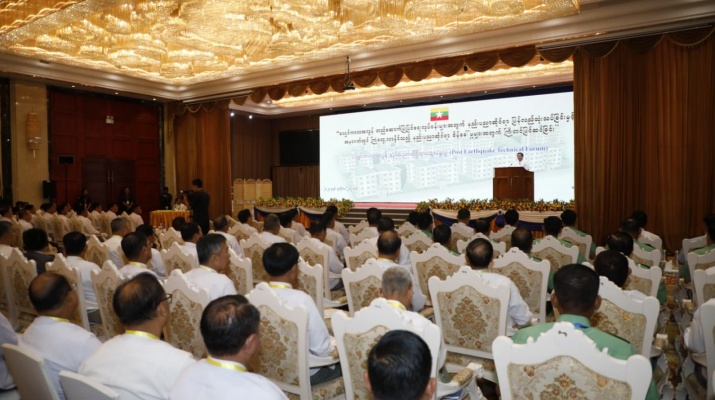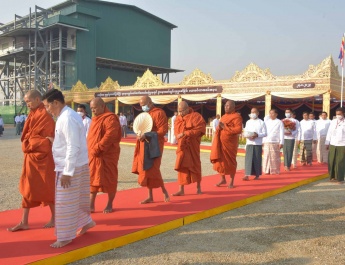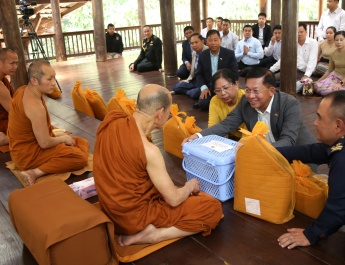NAY PYI TAW July 28
A ceremony to launch the Post-Earthquake Technical Forum under the title of technically reviewing post-earthquake construction and renovation process and preparing potential technical challenges in the future was held at Mingala Thiri Hotel in Nay Pyi Taw this morning, with an opening address by Chairman of the State Administration Council, Prime Minister Senior General Min Aung Hlaing.
Also present at the forum were Vice-Chairman of the State Administration Council Deputy Prime Minister Vice-Senior General Soe Win, Council Joint Secretary General Ye Win Oo, SAC members, Union-level dignitaries, Union ministers, senior military officers from the Office of the Commander-in-Chief, deputy ministers, experts at home and abroad, engineers from Myanmar Engineering Council, the Myanmar Architects Council, the Federation of Myanmar Engineering Societies, the Expert Committee for the Supervision and Inspection of High-Rise and Public-Use Building Construction Projects, the Myanmar Geosciences Society, and the Myanmar Earthquake Committee, and guests.
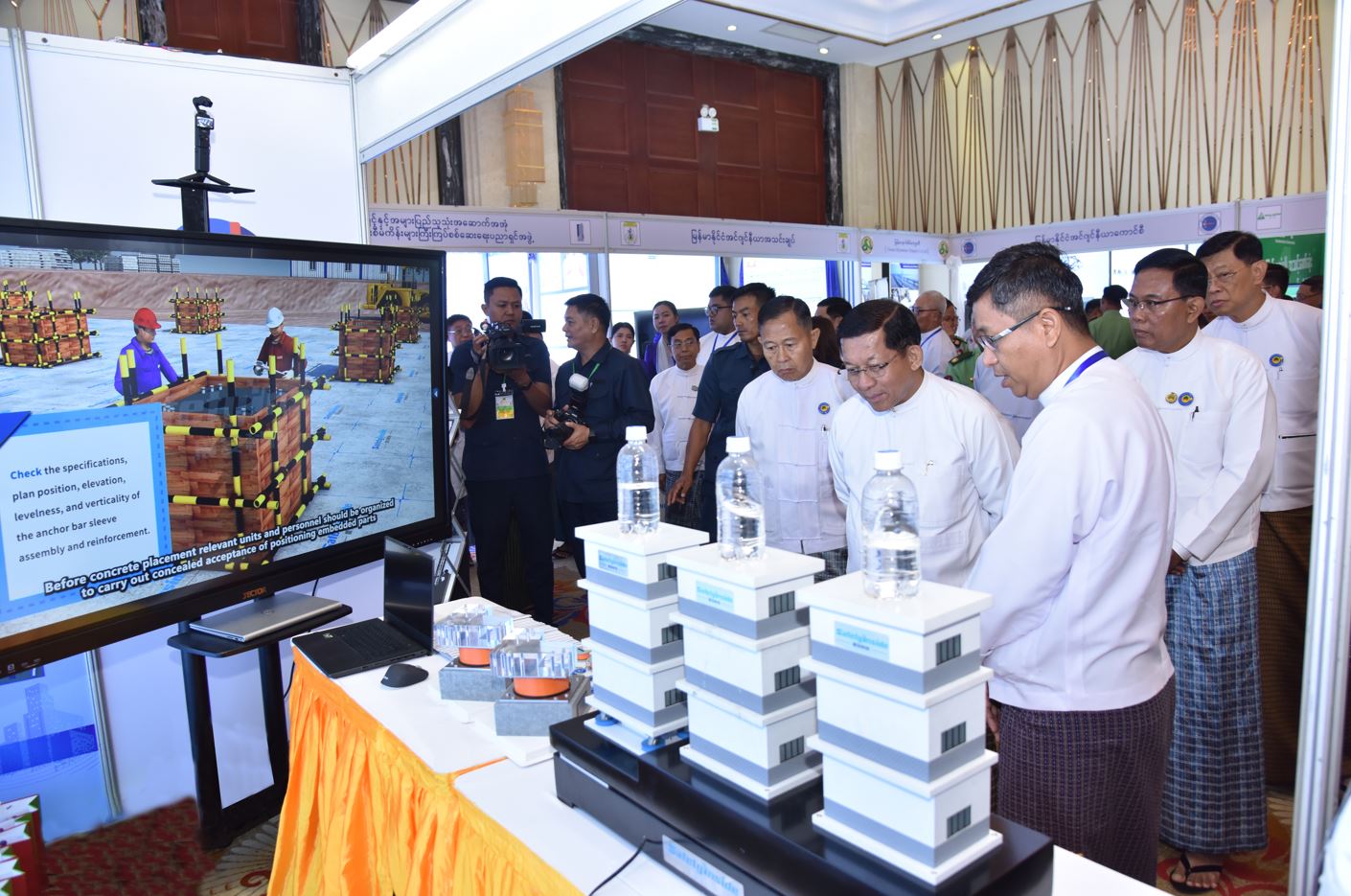
First, the Senior General and forum participants observed a one-minute silence for demise of monks and people in the devastating Mandalay earthquake in memory of today’s 4th month incident.
They all viewed a video clip on the technically reviewing post-earthquake construction and renovation process and preparing potential technical challenges in the future.
Speaking on the occasion, the Senior General said that throughout the world, people in various countries have established and lived their lives, and since the time civilization advanced, they have built their daily lives upon the creations of nature using their own innovations and technologies to ensure comfort, smoothness, and safety.
Although humans have lived in harmony with nature through their innovations and creations, it is widely recognized that they cannot avoid the natural disasters that are another gift from the Earth. Based on scientific knowledge developed throughout human history, there are natural hazards such as typhoons, floods, and forest fires that can be anticipated and mitigated. However, there are also natural disasters like earthquakes, which cannot be precisely predicted and must be faced when they occur. Among various types of natural hazards, earthquakes pose significant risks not only to developing countries but also to countries that are somewhat developed or fully developed, requiring preparedness to minimize the potentially devastating damage they can cause.
Myanmar, historical records show that since 1839 up to the present day, there have been about 20 major earthquakes measuring Richter scale 6 and above, causing significant destruction and loss. It is also well known that on 28 March 2025, an earthquake measuring 7.7 on the Richter scale struck, causing damage to five states and regions including Mandalay, Sagaing, and Nay Pyi Taw. This Mandalay earthquake was felt along the Sagaing Fault Line, as is widely recognized.
Due to the Mandalay earthquake, 3,739 monks and civilians lost their lives. Although this death toll is significantly lower compared to major earthquakes worldwide that have resulted in hundreds of thousands of casualties, it remains a tragic and heartbreaking event for our country. As for the damage to infrastructure, more than 50,000 houses, along with roads, bridges, transmission towers, schools, hospitals, religious buildings, and numerous factories and workplaces were severely damaged or destroyed.
The government has initially provided financial support of Ks-500 billion to help citizens rebuild their damaged homes and shelters. In addition, an additional Ks-2 trillion are being continuously allocated to support ongoing reconstruction and restoration efforts.
It is widely known that, despite advancements in scientific knowledge, earthquake hazards cannot yet be predicted with precision. In such circumstances, the best course of action is to prepare as thoroughly as possible. Preparedness does not only involve ensuring timely rescue operations and swift post-disaster recovery efforts but also includes anticipating ways to minimize loss of life and property when natural disasters strike. This is a crucial aspect of disaster management.
Today’s Post-Earthquake Technical Forum aims not only to discuss recovery and reconstruction efforts following the devastating Mandalay earthquake but also to strategize how Myanmar situated on an active seismic fault can minimize future earthquake damage.
Therefore, it is essential to effectively identify and discuss the needs of the country’s construction sector.
Many countries worldwide suffer from earthquakes. Among them, Asian nations like Japan, China, and Indonesia have utilized advanced technology and high-quality construction materials to build skyscrapers and high-rise structures. We must ask ourselves: Why can’t we do the same? For national development, the construction sector is vital.
Ensuring that buildings are durable and meet high-quality standards is critical. Since earthquakes remain unpredictable and unavoidable, infrastructure must comply with seismic-resistant standards to effectively protect lives and property.
After the Mandalay earthquake, government offices and residential buildings were inspected by teams from the Ministry of Construction, other relevant ministries, engineers from the Myanmar Engineering Council, the Myanmar Engineering Society, and the High-Rise and Public Building Construction Project Supervision Committee. They assessed damage levels and categorized structures accordingly. Additionally, Standard Operating Procedures (SOPs) were developed for repairing earthquake-damaged buildings, roads, and bridges, as well as for restoring ancient monuments, pagodas, and religious structures in collaboration with the Ministry of Religious Affairs and Culture.
A Building Rehabilitation and Reconstruction Supervision Committee was also formed to oversee systematic reconstruction efforts.
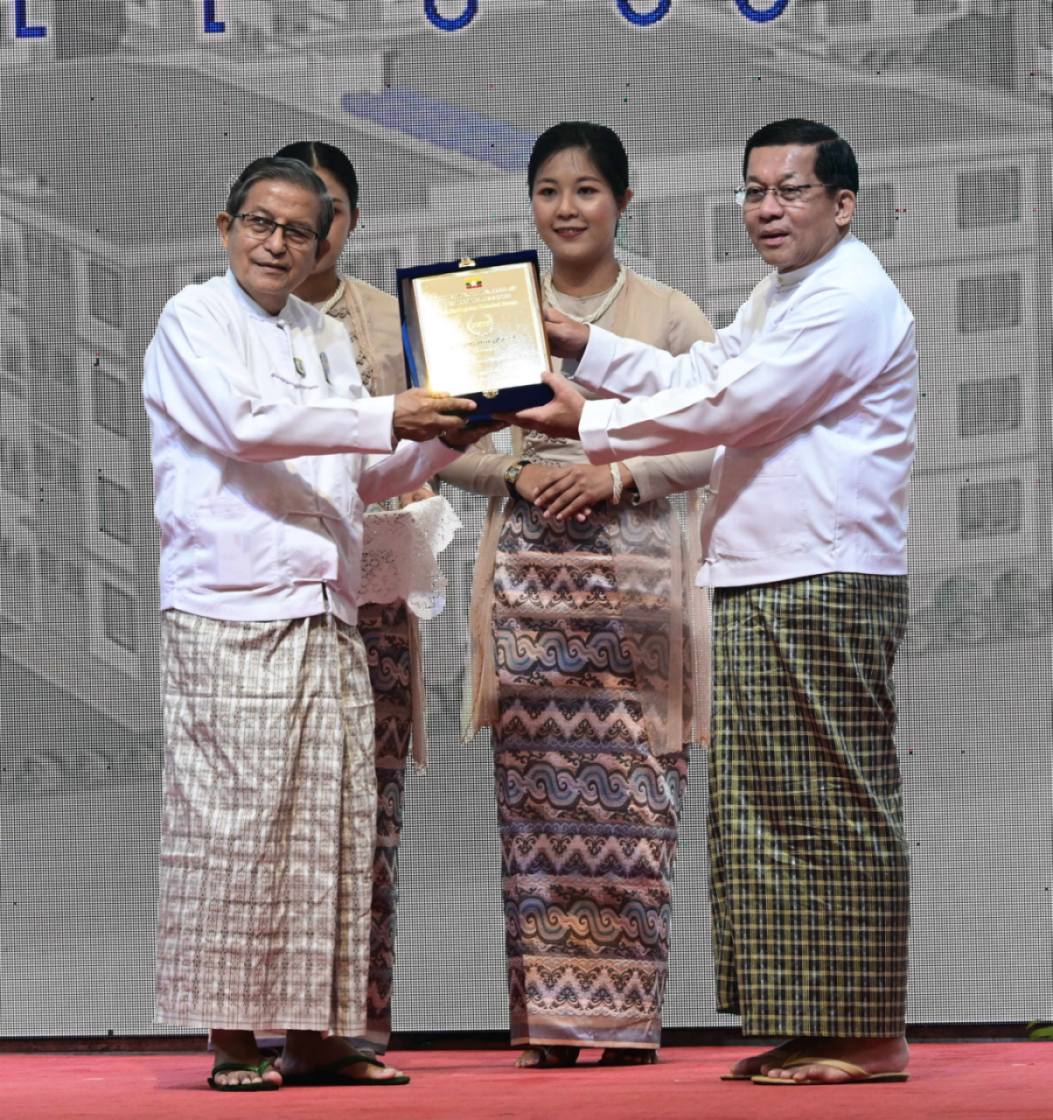
To ensure construction standards, the Ministry of Construction, in collaboration with the Myanmar Engineering Council, Myanmar Architects Council, Myanmar Engineering Society, Myanmar Geoscience Society, and the Myanmar Earthquake Committee, has been updating the Myanmar National Building Code (MNBC) since its initial release in 2012. Revisions in 2016 and 2020 incorporated seismic zone maps and structural failure analyses. The upcoming MNBC 2025 will integrate new geological data from the Mandalay earthquake, introducing enhanced seismic design standards and calculation methods to create an Earthquake-Resilient Design Framework.
Only when all stakeholders in the entire construction industry from importers and domestic producers of construction materials such as cement, iron and steel to designers, developers, contractors and supervisors cooperate conscientiously, will infrastructures we are building today withstand future earthquakes and safety of lives and property of the people be ensured.
Therefore, technicians participating in today’s Post-Earthquake Technical Forum are urged to discuss and find solutions frankly to abide by rules and regulations issued in accordance with the reality of construction works fully.
In conclusion, the Senior General urged all stakeholders including government staff, engineers and architects from the private sector, developers, importers, producers and distributors of construction materials, who are shouldering their respective duties in the construction sector of the country to make concerted efforts to create and build safe and secure infrastructures for citizens in the future through the Post-Earthquake Technical Forum held today.
Then, the Senior General presented certificates of honour to chairmen and officials of the Myanmar Engineering Council, the Myanmar Architect Council, the Federation of Myanmar Engineering Societies, the Supervisory Committee for High-rise Buildings and Public Infrastructure Construction Projects, the Myanmar Geosciences Society and Myanmar Earthquake Committee, who carried out damage assessments and established earthquake clinics.
Afterward, resource persons for respective papers and sectors at the Post-Earthquake Technical Forum for technical review for post-earthquake reconstruction and future technical challenges introduced themselves.
Then, the Senior General and participants posed for documentary photographs.
Afterward, the Senior General and attendees viewed the exhibition booths of the forum attentively.
The Post-Earthquake Technical Forum for technical review for post-earthquake reconstruction and future technical challenges will continue until 29 July with the aim of finding technical solutions for reconstruction of infrastructures damaged during the Mandalay earthquake and preparations for future technical challenges.


